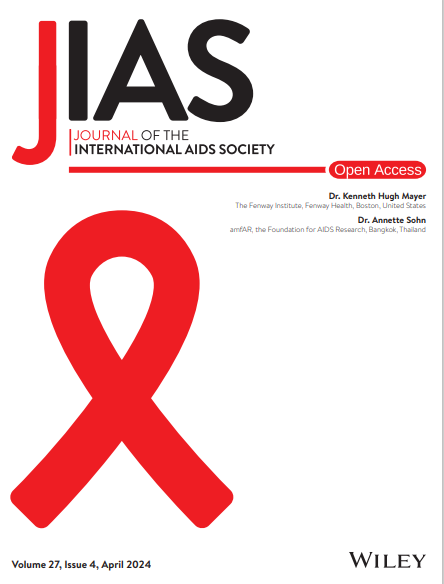High syphilis incidence among PrEP-adherent men who have sex with men and transgender women in Peru
Abstract
Introduction
Syphilis remains a public health concern in Peru. Pre-exposure prophylaxis (PrEP) implementation programmes in Latin America need to assess their impact on sexually transmitted infections (STIs), along with their feasibility. We assessed the relationship between PrEP adherence and syphilis incidence among men who have sex with men (MSM) and transgender women (TW) enrolled in ImPrEP, a multi-country PrEP demonstration project; however, this analysis focuses on Peru.
Methods
Between April 2018 and June 2021, 2292 HIV-negative MSM/TW attending Peruvian STI clinics were enrolled and followed in ImPrEP. Participants had to be aged ≥18 years and report recent condomless anal sex (CAS), sex with a partner living with HIV, STI history (diagnosis/symptoms) and/or transactional sex. Quarterly follow-up visits included PrEP dispensing, behavioural assessment, HIV and syphilis screening (treponemal test and Rapid Plasma Reagin [RPR] if syphilis negative at enrolment; RPR only if reactive-treponemal test at baseline). PrEP adherence was assessed using the medication possession ratio (MPR: #pills prescribed / #days between visits). Generalized estimating equation (GEE) Poisson regression models were used to evaluate factors related to syphilis incidence and also assessed syphilis incidence during two periods: pre-COVID-19 lockdown (up to 16 March 2020) and during COVID-19-lockdown (17 March 2020−June 2021).
Results
We enrolled 2039 cisgender-MSM and 253 TW, with a median follow-up time of 514 days; 205 incident syphilis cases were identified among 185 individuals. Overall syphilis incidence was 9.1 cases/100 person-years (p.y.) (95% CI: 7.9−10.4), 14.7/100 p.y. (95% CI: 10.5−20.1) among TW and 8.3/100 p.y (95% CI: 7.1−10.0) among cisgender-MSM. During the COVID-19 pre-lockdown period, syphilis incidence was 10.0/100 p.y. (95% CI: 8.3−12.1) and 8.1/100 p.y. (95% CI: 6.6−10.0) during-lockdown. Multivariate GEE analysis showed higher syphilis incidence among PrEP-adherent participants (MPR≥0.6) (adjusted incidence rate ratio [aIRR]: 1.46 [95% CI: 1.08−1.99]), those reporting receptive CAS (aIRR: 1.53 [95% CI: 1.11−2.11]) and TW (aIRR: 1.64 [95% CI: 1.08−2.51]). Syphilis incidence pre-lockdown was higher for participants reporting receptive CAS (aIRR: 2.35 [95% CI: 1.43−3.86]); during-lockdown, syphilis incidence was higher among those diagnosed with syphilis at enrolment (aIRR: 2.70 [95% CI: 1.67−4.36]).
Conclusions
Syphilis incidence is high among PrEP-adherent MSM/TW, those reporting receptive-CAS and among TW. Health systems implementing PrEP should strengthen existing STI prevention strategies and incorporate new ones, like Doxy-PEP for PrEP-adherent MSM, TW and individuals engaging in receptive-CAS. MPR may be a tool to identify PrEP users at risk for syphilis.


 求助内容:
求助内容: 应助结果提醒方式:
应助结果提醒方式:


